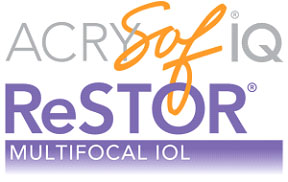Dr. Jay Lippman and the team at Lippman Eye Care Center make it a priority to stay at the forefront of advances in ophthalmology for the benefit of our patients. We are always looking for ways to make treatment safer, more comfortable and more precise. We are very excited about the revolutionary LenSx Femtosecond Laser in cataract surgery.
Femtosecond Laser
This advanced femtosecond laser can be incorporated into your cataract surgery to replace traditional surgical instruments and steps. Using the femtosecond laser is beneficial for several reasons:
- Enhances the accuracy of the procedure
- Enhances the safety of the procedure
- Reduces and eliminates some of the more common complications of traditional cataract surgery
- Makes surgery and recovery shorter as well as more comfortable for patients
- Improves visual outcomes
Cataract Surgery
The LenSx femtosecond laser is used to replace handheld instruments during critical steps of cataract surgery. For example, the laser makes the initial incisions at the edge of the cornea to access the internal structures of the eye. Then, it makes a small opening in the thin, clear capsule that surrounds the lens and carefully tears the capsule open. (When this step is performed with a laser as opposed to a handheld tool, it is easier for the surgeon to accurately position and center the intraocular lens later during the procedure.) Finally, the femtosecond laser emits fine pulses of light to break up the lens into small pieces so they can be more easily removed from the eye. Femtosecond Laser energy is less likely than traditional ultrasound energy to lead to heat buildup and possible burns. All in all, using a laser during cataract surgery reduces the risk of complications and enhances visual results.
IOLs

After the cataract-diseased lens is removed from the eye, it is always replaced with an intraocular lens (IOL). The IOL is what restores focusing power and clear vision after cataract removal. Dr. Lippman understands that his patients are unique, and have specific vision goals and needs. To serve a wide variety of patients, he offers several types of IOLs, including advanced IOLs with special features — for example, lenses that allow dynamic focus between objects near and far. With standard monofocal IOLs, most patients still need to wear glasses after cataract surgery. But with advanced multifocal and accommodating IOLs, many patients rarely or never use glasses after cataract surgery. For certain patients, especially those who prefer active lifestyles, reduced reliance on glasses is life-changing.
Contact Lippman Eye Care Center
To learn more about the technology Dr. Lippman uses in LASIK and cataract surgery please contact Lippman Eye Care Center today. You can call or fill out the email contact form on our website.
